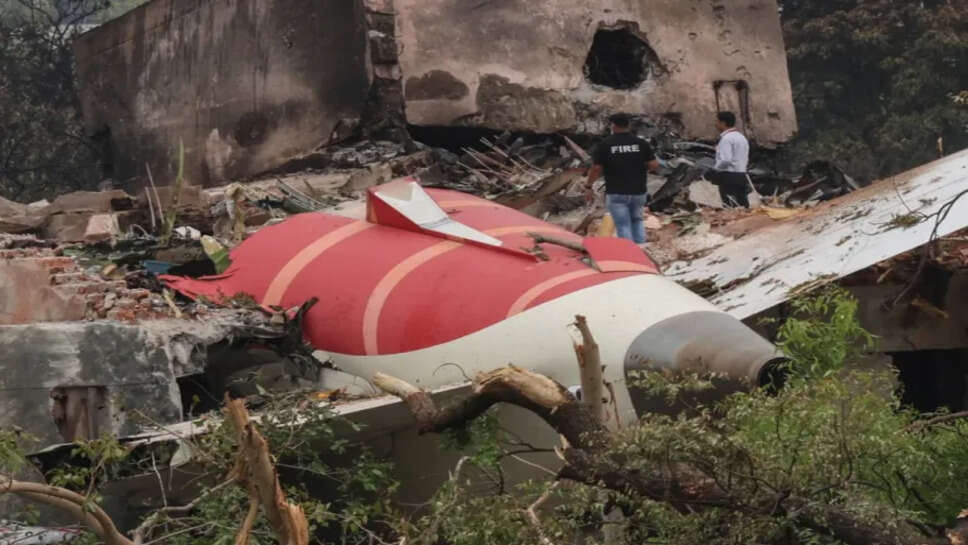Air India Crash: High-Level Committee Holds First Meet, Discusses Causes and SOP Failures

A high-level committee constituted by the Government of India convened its first meeting this week to delve into the tragic Air India aircraft accident that shook the nation. The crash, which involved a wide-bodied jet operating under one of the country’s flagship aviation carriers, prompted immediate responses from multiple agencies, leading to the creation of this expert panel comprising aviation regulators, technical specialists, safety auditors, and senior officials from the civil aviation ministry.
First Meeting: Structure and Focus
Chaired by a senior official from the Directorate General of Civil Aviation (DGCA), the meeting began with a minute of silence in memory of the lives lost in the disaster. The session then transitioned into a comprehensive discussion of the events surrounding the crash. According to sources close to the development, the meeting primarily focused on understanding the preliminary inputs from the investigation team deployed to the crash site, with emphasis placed on black box data retrieval, cockpit voice recordings, and air traffic control (ATC) communication logs.
The panel also examined satellite imagery and radar data obtained during the aircraft’s descent, along with technical inputs received from the aircraft manufacturer. A technical sub-committee is now tasked with evaluating potential mechanical failures, human factors, weather irregularities, and possible protocol lapses that may have contributed to the incident.
Likely Causes: Theories and Early Insights
While the official accident investigation is still in progress, several theories have begun to emerge. Mechanical malfunction remains a primary concern. Experts from the Aircraft Accident Investigation Bureau (AAIB) highlighted the possibility of a critical systems failure during final approach. Simultaneously, questions have been raised about pilot response time and decision-making during the emergency phase.
Weather conditions at the destination airport were reportedly deteriorating rapidly at the time of landing, with strong crosswinds and low visibility. Investigators are now closely examining whether standard operating procedures (SOPs) for adverse weather landings were appropriately followed.
Another possible factor under review is the aircraft's maintenance history. The panel requested detailed records of the last three major service checks and the complete log of technical complaints filed in the six months prior to the crash. Initial findings reportedly revealed discrepancies in the aircraft's avionics log that had not been flagged for urgent repair.
SOP Review: Are Current Measures Sufficient?
The high-level panel agreed that a reassessment of the SOPs used across Indian aviation operations is necessary. Although civil aviation in India has seen significant advancements in safety standards over the past decade, the recent crash has exposed potential gaps in enforcement and situational readiness.
Discussions were held on the use of advanced terrain warning systems, better training for emergency scenarios, and stricter weather-based flight planning. The committee plans to recommend the integration of AI-assisted real-time monitoring tools, both in the cockpit and at ATC towers, to help predict and respond to emergencies more effectively.
Aviation experts present at the meeting emphasized the need for simulated training modules for pilots that specifically replicate rare but high-stakes mechanical failures. Enhancing crew resource management (CRM) skills and improving pilot fatigue monitoring mechanisms were also raised as urgent priorities.
Learning from the Past: Historical Accidents Revisited
In a parallel effort, the panel reviewed data from previous aviation accidents in India and globally. The objective was to identify patterns, recurring errors, and overlooked warning signs that could offer insights into preventing future tragedies.
Notably, the committee analyzed the 2010 Mangalore crash and the 2020 Kozhikode runway overshoot, both involving Air India Express. In both cases, key factors such as inadequate runway length, misjudgment during final approach, and delayed go-around decisions were identified. The panel is working to see whether any of these factors bear relevance to the recent incident.
The DGCA has also been asked to submit a full compliance report on the safety recommendations that followed each of these past crashes, indicating whether the lessons learned were effectively implemented or left unaddressed.
Institutional Accountability and Transparency
The panel unanimously stressed the importance of transparency throughout the investigation process. A recommendation was made to set up a centralized digital portal where verified updates from the AAIB, DGCA, and ministry can be published. This would also host real-time updates on the implementation of safety measures suggested after each aviation incident.
Moreover, the panel called for greater accountability from operators and aircraft maintenance teams. Regular audits, unscheduled inspections, and third-party evaluations are being considered as standard practices going forward.
The panel plans to work closely with international aviation bodies such as the ICAO (International Civil Aviation Organization) and IATA (International Air Transport Association) to ensure that India’s revised aviation safety protocols are aligned with global standards.
Next Steps and Broader Implications
A second meeting of the panel has been scheduled for later this month, during which the committee will receive more detailed forensic reports from the crash site, including metallurgical testing of aircraft components and interviews with survivors, if any.
The Ministry of Civil Aviation has also ordered a temporary suspension of operations of similar aircraft models until a preliminary risk assessment is completed. In the interim, airlines have been instructed to conduct thorough maintenance checks and provide refresher emergency training for their cockpit and cabin crew.
Public confidence in aviation safety is of utmost importance, the panel emphasized. The findings of this panel are expected to serve as the foundation for a new, upgraded national aviation safety framework, potentially influencing not just domestic protocols but also international collaborations.
As the investigation progresses, the government has assured citizens that no stone will be left unturned. The committee’s first meeting marks the beginning of what could be a wide-ranging transformation of aviation safety oversight in India. With lives at stake and global scrutiny watching, the Air India crash could become a defining moment for the country’s aviation sector—prompting reforms that ensure such a tragedy never occurs again.
